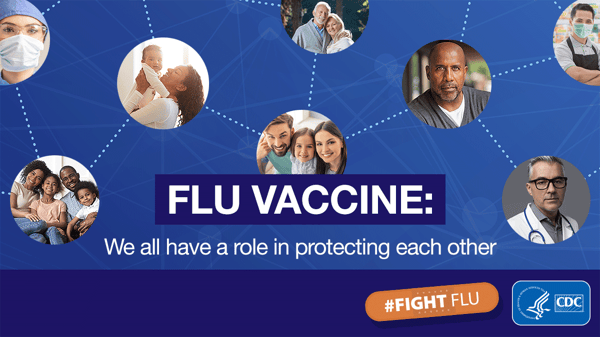
The CDC has updated their Seasonal Influenza Resource Center to include materials and other information related to this year’s flu season. The CDC’s seasonal flu vaccination resources are available to assist providers and other partners in communicating the importance of getting vaccinated against the flu. Sample content is available to download, customize, and share.
According to the CDC, last year’s flu season saw the highest number flu vaccine doses ever administered. More than 193 million doses were given, and about 53-54 percent of adults received a flu vaccine. This coverage is higher compared to the previous year, which was about 48 percent of adults. People 2030 Influenza, a public health initiative, is focused on having 70 percent of the population vaccinated against the flu. In order to reach that goal, the CDC is reliant on providers and other partners to be a trusted source for patients seeking vaccination information.
In addition to CDC campaign materials, the ACIP released their recommendations for the upcoming flu season.
- All persons 6 months or older should receive influenza immunization.
- Influenza vaccination should not be delayed to procure a specific vaccine preparation if an appropriate one is already available.
- Optimal vaccination means getting vaccinated by the end of October.
- Certain persons should be vaccinated earlier rather than later, including children ages 2-8, those who require 2 doses, and women in their third trimester of pregnancy.
- Vaccination should be offered as long as influenza viruses are circulating and unexpired vaccine is available.
- Vaccine administered in December or later, even if influenza activity has already begun, is likely to be beneficial in the majority of influenza seasons.
- Current CDC guidance indicates COVID-19 vaccines and other vaccines, including influenza, may be co-administered without regard to timing.
ADDITIONAL CONSIDERATIONS
The CDC recommends providers choose purpose-built, stand-alone units, designed for storing vaccines and other medical-grade products. These storage units safeguard vaccines by providing reliable, consistent temperatures across multiple locations inside the unit. The following recommendations are also outlined in the CDC Vaccine Storage and Handling Toolkit:
- Monitor the equipment’s temperature using a digital data logger (DDL)
- Calibration testing every 1-2 years, or according to the manufacturer’s guidelines
- Conduct routine maintenance for all vaccine storage units and related equipment so that your equipment functions at maximum efficiency
OTHER BLOGS YOU MIGHT BE INTERESTED IN...
- How to Get Ready for Flu Season
- 5 Tips for Ensuring Vaccine Storage Safety
- Webinar Recap | Back to School: Navigating return to school and work amid COVID-19 and Flu Season
- New Standard for Vaccine Storage Published
To view all campaign materials and other educational information from the CDC on this year’s flu season, visit the Seasonal Influenza Resource Center on the CDC’s website.
Image Credit: CDC




